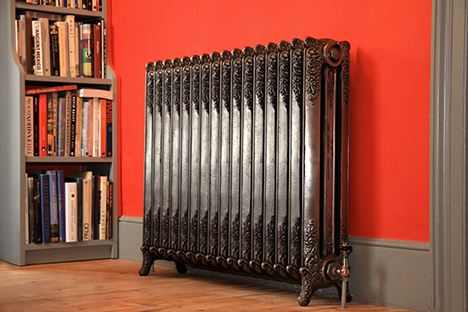Staying Green While Heating Old Homes
4 min read
Living Green Magazine –
Older homes have a lot of history and character. When you take in the solidity of the walls, and the trim and details molded and applied by hand, you know that they were built with care and built to last. Unfortunately, when it comes to energy efficiency, older homes can leave a lot to be desired.
Old windows were usually single panes of glass in wooden frames; or they were leaded or stained glass that was thicker, but still not insulated. Doors were thick, heavy wood, but had little to no weather stripping to prevent drafts. Walls had almost no insulation to speak of.
As the owner of, or tenant in, an older home you are probably already aware that you need to take special steps to make your home as energy efficient as possible. Below are some things that you might not have thought of.
Contact Your Power Company
Thanks to deregulation, a lot of power companies have to offer competitive rates to attract and keep customers. Many of these companies are also offering customers green energy options for heating and cooling their homes. For example, Ambit Energy, a gas and electric company based in Texas, offers a green-certified electric service to its customers in both Texas and New York.
It’s a good idea to check with your energy provider each season to see if they offer a green energy option. If you live in a deregulated area, you can also check with the other providers to compare your options. If you find a company that offers a green option, you can transfer your service to them. If no one in your area offers a green option, keep checking with them each season to see if anything has changed.
Weatherproof Your House
Weatherproofing your house is about more than just sealing the doors and windows, and insulating the walls. Although sealing against drafts is certainly important, there are plenty of other things you can do to make your home even more comfortable, and reduce your carbon footprint.
Window and Wall Coverings
A lot of older homes don’t have space for insulation in the exterior walls. Plaster and lath was laid down right on top of the building materials. As a result, the exterior walls tend to get very cold in the winter, and hot in the summer.
Old castles had the same issues with insulation. To deal with drafts, people used tapestries to insulate the walls and windows. These heavy fabrics trapped drafts, and prevented heat from escaping through the walls. You could do the same with your home by hanging large, thick, insulating curtains over your windows; you could even make them wide enough to extend the width of the wall.
At night you can draw the curtains across the windows to seal in the heat; during the day you can open the curtains to in natural sunlight to further warm the room. Even if you plan to put plastic over all your windows, insulating curtains can add an extra layer of protection.
Radiator Reflectors
If you have radiators in your home, you might notice that the wall behind the radiator gets really hot. Well, all that heat actually radiates through the wall and outside your home. In fact, if you were to touch that part of the wall outside your house, it would probably feel much warmer than the surrounding areas.
If you put something reflective, like tin foil, behind the radiator, the heat will bounce off the surface and radiate back into the room. You could also paint the wall with a heat-resistant, reflective paint. The wall will still get warm, but you won’t lose nearly as much heat as you would without the reflective surface.
Adjust Your Thresholds
If you have light coming below your doors, then you need to adjust your threshold. Your threshold should have three or four screws that you can turn to lift or lower the threshold. Adjust the threshold until it is in contact with the bottom of your door; you might see a little light coming through the corners, and that’s ok. The door should be able to swing freely. If it gets caught, or drags then the threshold is too high. The threshold should not wear out, but if you find that you can’t adjust your threshold to fit properly, you might need to replace it.
Insulate Your Outlets
Electrical outlets in exterior walls can let in drafts like nobody’s business. You can insulate your electrical outlets yourself, or hire a professional to do it for you.
The post Staying Green While Heating Old Homes appeared first on Living Green Magazine.
(c) Living Green Magazine – Read entire story here.





